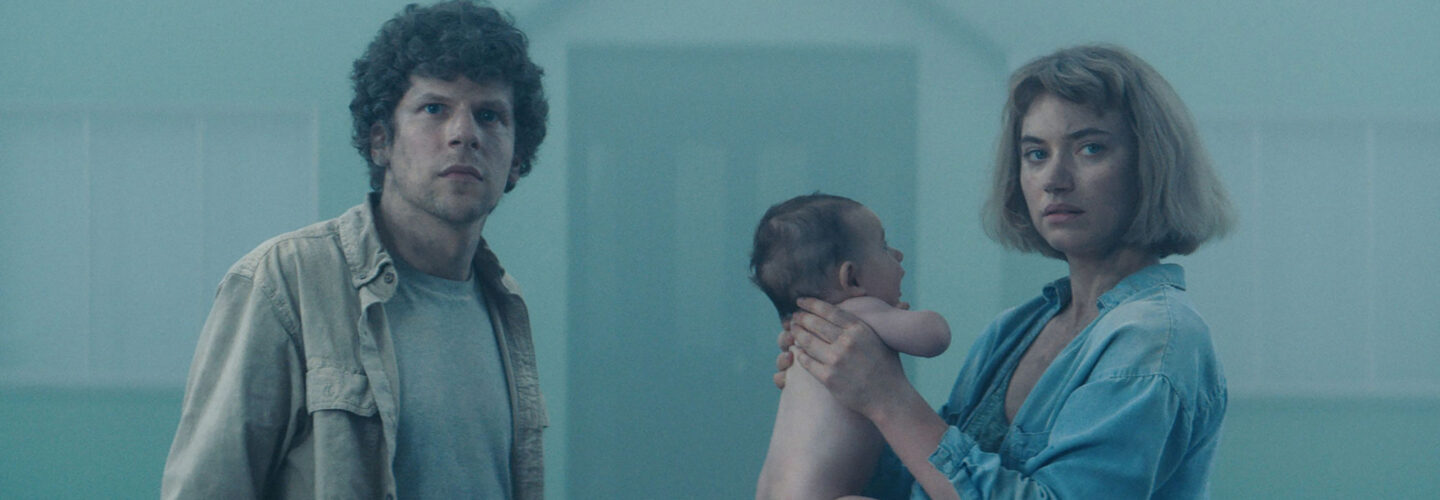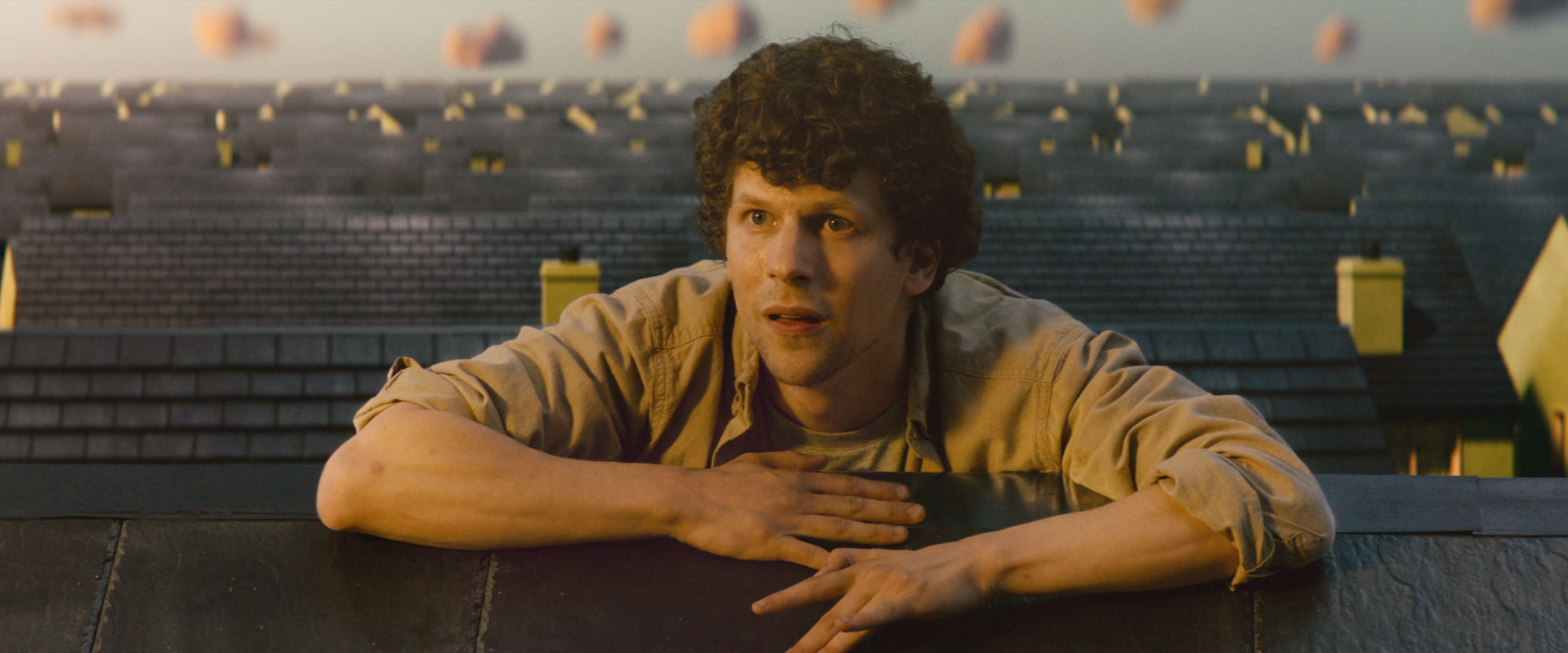
A deserted suburb devoid of the hustle and bustle of people living their lives, where a family is confined to spend every waking moment together and all their material needs are met by deliveries left at the doorstep. What reads like our current pandemic reality is actually the unsettling set up of Irish Director Lorcan Finnegan’s sci-fi thriller VIVARIUM, starring Imogen Poots and Jesse Eisenberg as a couple lured by the promise of the ideal home in the picture perfect little boxes housing development of Yonder. A spiritual successor to his foreboding short Foxes, Finnegan returns to DN for an extensive discussion about creating the disturbing (un)reality of his sophomore feature, estate agents as brood parasites and the soul crushing trap of suburbia.
Your 2011 short Foxes feels very much like a precursor to the suburban hell of VIVARIUM how did that earlier film feed into this feature?
They’re both connected but at the same time very different. Foxes was a reaction to what was going on socio-politically in Ireland back then with the building boom and also that general capitalist culture of get a mortgage, get on the property ladder, get a life and all that stuff. At the time there were all these commuter belt housing developments built in the middle of nowhere, with banks giving 100% mortgages and people paying way over the odds for these houses which were just carbon copies of each other. Then the crash came and a lot of people got stuck. They couldn’t sell them. The infrastructure wasn’t even finished. People were existentially and financially trapped in these places and that’s where Foxes came from as a reaction to that.
People were existentially and financially trapped in these places.
That sort of problem never went away it actually only got worse. In fact, when we premiered VIVARIUM at Cannes there was a march in Dublin about the housing crisis on the same day. So there were ideas and themes leftover from Foxes that we weren’t fully finished with yet. Foxes was a supernatural short that was very specific to those ‘ghost estates’, but the ideas that were in there could be transposed onto a universal canvas which looked at consumerism and capitalist ideology in a much more sci-fi quantum way which is where VIVARIUM came from.
[Read our Foxes interview with Lorcan]
Is it true that a David Attenborough documentary was also a source of inspiration for VIVARIUM?
Yes. Screenwriter Garret Shanley and I wanted to create a new kind of monster and were discussing what people are really afraid of nowadays. It’s not that beastly creatures are going to come out of the bushes or something. It’s more of an existential dread about all the hopes and dreams you had when you were bright-eyed and youthful being taken away from you. Life wrapping you up in reality and into a horrible suburban existence, the physical representation of which being an estate agent.
At the same time, we’re watching a David Attenborough doc on the life cycle of the European cuckoo. They’re brood parasites who don’t raise their own young. They’ll find the nest of another bird, eat one of the eggs or throw it out, lay their own egg, which will match the others in the nest, then fly off. The egg they’ve laid is pre-programmed to hatch before the other ones and while still blind, this little cuckoo chick will throw the other birds out of the nest. It then mimics the sound of lots of little birds so the parents feed this bird over and over and over, almost dying of exhaustion in the process. Once grown it flies off and will come back in spring to do the same thing again. There’s something very horrific about the indifference of that relationship. We thought that was an interesting way into what this estate agent could be like and it could also work in parallel with the life cycle of humans in this strange world that we live in.
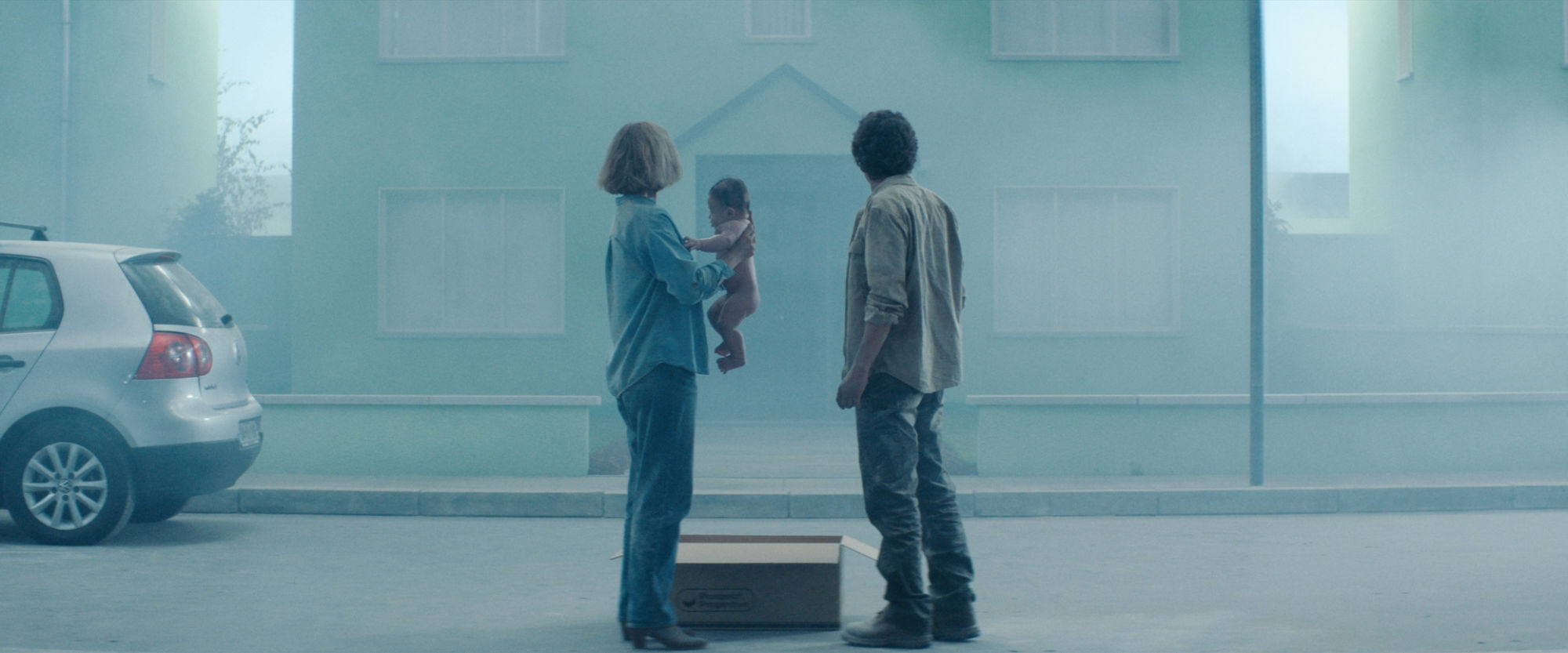
Alongside that commentary about the so-called ‘ideal’ lives we’re expected to fall into, it feels like you’re also commenting on the Amazon living we engage in now with all our needs being met by faceless internet deliveries.
Yeah totally. In the film, they’re basically given everything that it appears that we want. People are living in these bubbles where we appear to have everything we want but there’s something missing. Some sort of spiritual element or connection with nature that we’re missing and it can crush your soul. So yeah, the boxes arriving is just like somebody ordering everything online. You never have to go anywhere, it’s convenience.
People are living in these bubbles where we appear to have everything we want but there’s something missing.
The film is structured in three distinct acts, was that always present in Garrett’s script or something that you found your way to later in the process?
It was always in the script which was very much structured almost like a play with the curtains closing and reopening and joining them at a later stage in the story. To me, there’s a parallel between youth, middle age and old age in the three acts. When they’re young in the first act they’re hopeful and having a laugh with each other. In the middle act it’s like middle age, they’re fighting about stupid stuff and kids getting in the way. Then in old age, they come together again having regretted spending so much time arguing about silly things.
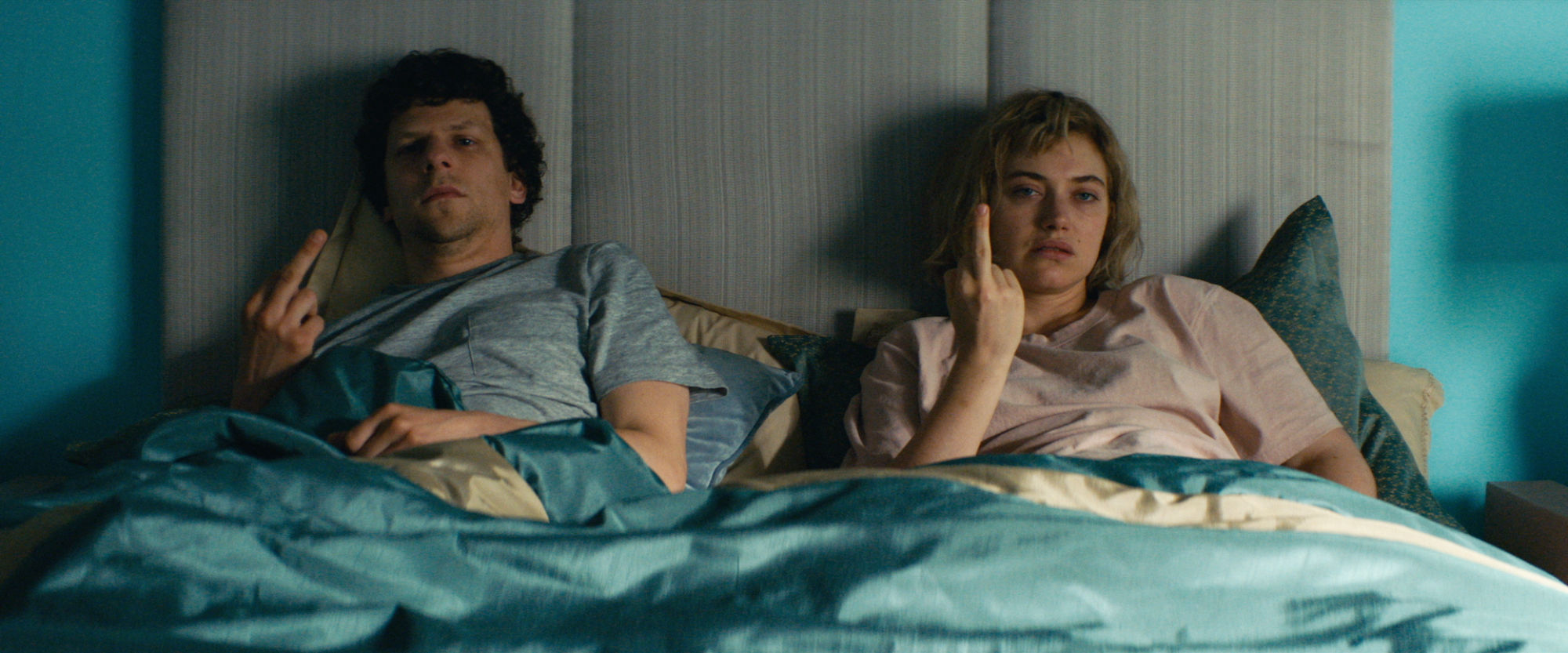
This is the third film that Garrett has written and you’ve gone on to direct. How does that writing-directing relationship work? Do you develop projects together or does Garrett present you with completed scripts?
We usually developed stuff together from the beginning. He’d written Foxes as a blog post, more as a piece of fiction writing. We unravelled it a bit and turned it into a screenplay together. Then for our first feature Without Name, I think we both had an idea for what we wanted it to be about. Garrett created a story around that and then it was back and forth until we got it to a place where we were ready to shoot. VIVARIUM worked the same way.
Imogen Poots was first onto the project and pointed you in the direction of Jesse Eisenberg, how did she come to the role?
She’d read it basically. The script was going around for a while when we were trying to cast. Originally Mackenzie Davis was attached but then she got offered Terminator: Dark Fate so we had to start again. Imogen had originally been on my list but at the time we were looking for actors she wasn’t actually available – we thought we were shooting a year before we actually shot. When we opened casting back up again I met Imogen in London after she had read the script and we just ended up hitting it off. She’s a great actor and was physically right for the part but she also completely understood what the film was about.
After I’d offered her the part we met again to talk about who we’d cast as the guy and she suggested Jesse which I could see would work. Imogen fired him off a copy of the script there at lunch, he read it and like two days later or something I had a call with him and we chatted through it. Then we met up in New York and hung out for five or six hours walking around Manhattan, talking about this and that after which he said he wanted to do it so we’re good to go.


One of my favourite aspects of VIVARIUM is the distinctly weird (un)reality of the world Gemma and Tom are trapped in. Could you tell us how you developed the style of that unnervingly sterile environment and brought it to life?
The place was designed to be as if they’re almost living in a catalogue for this perfect life in Yonder, like a brochure full of Photoshopped stock photography turned into a real space. In the script, it was described as being like a René Magritte painting like The Empire of Light with the shadows and interplay of light like Giorgio de Chirico. Also that there was no wind, no rain, no other sounds, no insects, no natural light – just a very artificial environment.
The perfect solution would have been to build a gigantic place and have a huge roof over it but we were limited from doing that by the budget. We did look into shooting in holiday home kind of places where we could possibly paint all the houses the same colour and clean them up, but they still all had an organic grubbiness that you can’t really get rid of. Plus we would have been up against the natural elements as well.
In the end the only real solution was to build a set in a studio. We couldn’t afford a massive set in an actual proper studio so we went to Belgium (the film is a Belgian/Danish/Irish co-production) and found a big warehouse where we were able to build the exterior facades of three houses. The middle one had sides on the house that weren’t realistically deep but were deep enough for the camera to believe they went back full length, while the two on either side only had one side. Then we had the garden, a bit of wall, footpath and a section of road. There were no rooms in them so we had to post in the rooms. Above the set we had sky panels diffuse with a huge cloth.


It was really tricky because originally I had storyboarded everything to what you imagine you’re going to shoot but then we had the reality of the restrictions of the set. We had a very specific VFX budget so we couldn’t just shoot off the set all the time and comp in the rest later, which meant we had to choose those moments carefully.
There was this jigsaw of flipping everything, reversing it and maintaining the continuity of flipness.
Every time we did a reverse angle, like Jesse and Imogen talking to each other outside the house, we had to flip the lighting, turn the car around, take nine off the door, etc. and shoot back into the same background. So as well as the tight schedule there was this jigsaw of flipping everything, reversing it and maintaining the continuity of flipness – hair and all that kind of stuff.
We scanned the actual set with a LiDAR scanner to create the CG elements. Obviously LiDAR isn’t perfect so it still had to be fixed and manipulated a little bit. We also shot a lot of plates. Each evening for the 10 days of Yonder exteriors, Peter Hjorth the VFX supervisor would shoot a plate, move the camera, shoot a plate and so on for the 2D extensions. That meant we were able to comp in an efficient way by using plates, a lot of 2D mapping and a certain amount of full CG.

Tonally it needed to be this horrible fake but real world that’s completely devoid of nature, so I picked this green colour for the houses to give it an even more sickening institutional feeling. Green in nature has a lovely lush quality to it but putting it into this artificial light environment it takes on a toxic quality where it’s more like poison or toxic waste.
What did you shoot on?
Myself and MacGregor the DP had talked about shooting on film at one stage but it wasn’t going to be a runner. Once we really starting getting into the aesthetic we decided we wanted something clean. Although we did actually add a little bit of noise and even bits of dirt and patina to the set because it started looking too clean and fake.
We ended up shooting on Alexa and used really long lenses for most of it to compressed the space. A lot of it was shot on a 180mm or 240mm lens so that we could have three heads in a shot from up high. A lot of the angles as well are quite Sims-like as if you’re slightly above and looking down at a slight angle for a claustrophobic feel which was a really good solution.
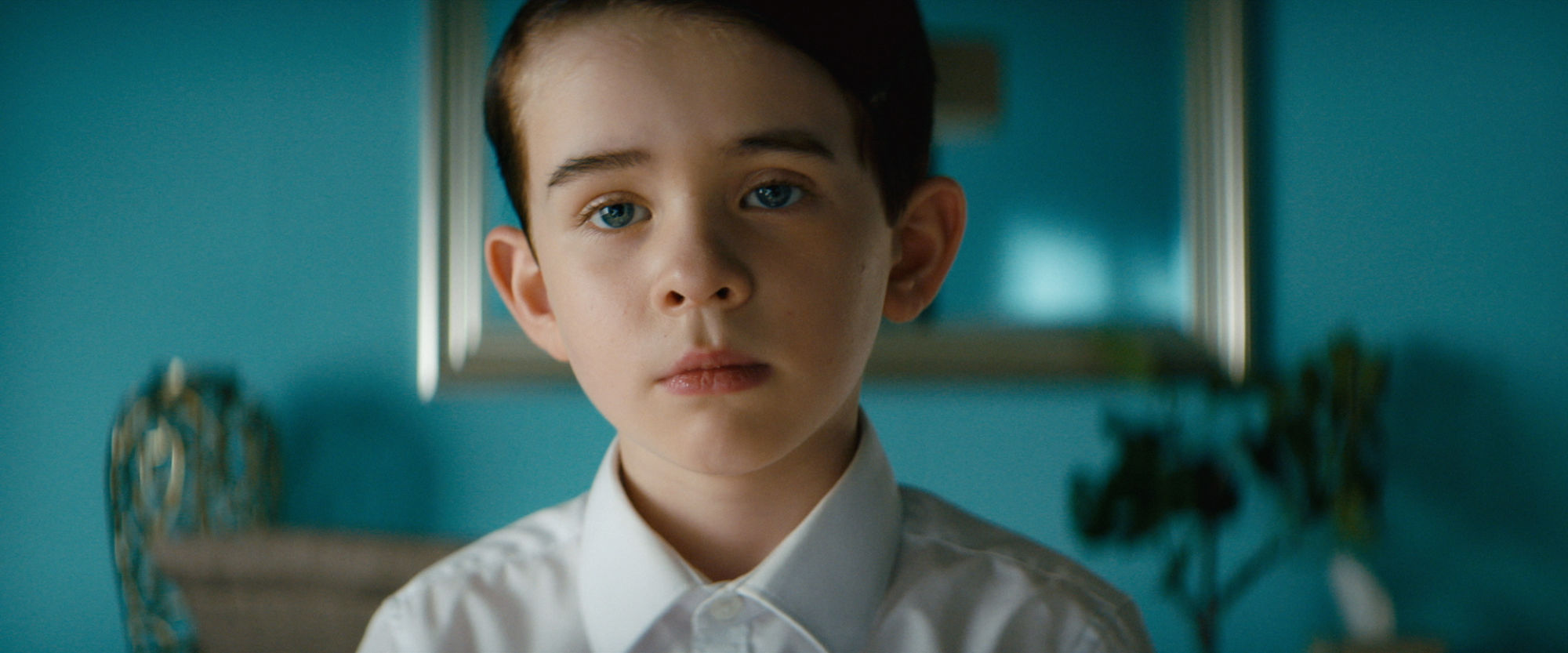
Garret Shanley and I wanted to create a new kind of monster.
Once they’ve recovered from the WTF shock of the way things unfold in VIVARIUM, have you found that audiences you’ve spoken to during festival Q&As have been engaged with the deeper themes of the film?
A lot of people have really identified with it and can see the parallels with their own lives. It’s interesting to see that some really nice people say things like, “If they’d only loved the boy more would it have all been different for them”. Somebody in Korea came up to me crying and said that it made him think of his parents and how hard they worked so he can have a nice life. Most people get it but as it’s only played for film festival audiences – who are used to consuming slightly off the beaten track movies – it’ll be interesting to see when it gets released what a general audience thinks of it.
Before I let you go I wanted to ask you about the #dublinstreets #dublinefaces photography project that I’ve been avidly following over the years on your Instagram account. How did that come about?
I’m not really into social media to be honest but a friend of mine moved to Australia and he started using Instagram to stay in touch with me and his friends back home. So I started posting some photos of Dublin in a street photography kind of a way rather than photos of me going “Hi!”. I think the first photo I took was of two old ladies with headscarves and I don’t know, I just kept on doing it. All these people started following me and there’s been a bunch of interviews and features in magazines. We made a book a few years ago as well.

It’s just a hobby. It’s completely the opposite of the filmmaking that I do which is much more controlled, storyboarded, art directed and precise. Going out and just wandering taking photos is so much more spontaneous, you never really know what you’re going to get. At the same time it’s interesting in terms of light, texture, colour and composition. My #dublinfaces series displays these characters that really leap out at you on the street, that have this enigmatic quality to them. It’s just a hobby really that I find quite relaxing.
VIVARIUM will be available to watch on digital and streaming platforms from the 27th March.

